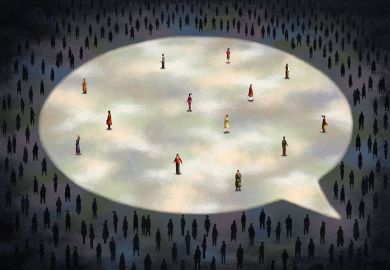Theatre, as performance art, attracts an audience, whether on streets, in a cellar or an opera house. But it also attracts another audience, which may not be either welcome or generous: that of government. Theatre, with its simultaneously hypnotic and arousing effect, can act as a platform for radical, subversive and revolutionary ideas that authoritarian governments may regard as dangerous or use, as in Cuba, to support their political agendas.
For this reason,theatre is more likely to be censored than any of the other arts. In the Americas, the burning of theatres, the imprisonment and torture of those who work in them and the removal of the dramatist's and actor's means of earning a livelihood have all been instruments of government policy. Even in the United States, during the witch-hunts of the McCarthyite era, the alleged left-wing sympathies of playwrights, actors and directors were used to impose a theatrical censorship, aimed at silencing talent regarded as undesirable. But censorship of the theatre in the second half of the 20th century is economic as well as political. The perception that the work of a theatre is either "elitist" or "subversive" results in the removal of subsidies or tax concessions without which many companies cannot survive. The leverage exerted by governments in the Americas, as in Europe, while variable, is pervasive.
Volume two of The World Encyclopedia of Contemporary Theatre , which covers all the Americas, including the Commonwealth and French Caribbean, sustains the informative and intellectually distinguished standards of the first volume on Europe. Its distinctiveness comes from its setting of theatre in the context of geographical, economic and political variation within the Americas, where, for example, what happened in Chile under General Pinochet between 1973 and 1983 (the curfew made evening performances impossible) was a very different scenario from that in Canada, where in the same period a preoccupation with regionalism (and nationalism) evolved into a creative awareness of cultural difference.
Each chapter on "Nations and their theatres" succeeds in illustrating how individual cultures and their expression in dramatic art draw upon resources - languages, styles, groups, buildings, audiences - that are themselves changing. Starting from an account of "indigenous theatrical forms" and the beauty, as in Mexico, of pre-Hispanic performances, the contributors illustrate how in the recent past theatre in the region has survived in conditions of violence, oppression and economic deprivation. In many countries, universities have played a key role in its survival through their departments of drama and by performing new work where, as in Colombia, for example, a culture of violence could be analysed and discussed, and the problem of Latin America's relationship with the United States dramatised.
The volume succeeds in maintaining a balance between the description of performances that reflect conflicts in the recent past of individual nations and a broader sense of how those nations and cultures are evolving from pasts that are themselves very different. Each has its distinctive cultural history, patterns of immigration, linguistic contours and artistic preferences, highlighted in the contrasts between Caribbean and Andean societies, as well as the divisions between wealthy and poor nations of north and south.
Some contributors confine themselves to a description of theatrical activities rather than analysis of works that seem likely to endure through influence or revival. Arthur Holmberg's contributions on theatre in the United States are a notable exception for combining an overview with an excellent discussion of problems of identity as a form of "cultural anxiety" in plays by William Inge, Eugene O'Neill, Edward Albee, Lorraine Hansberry and Amiri Baraka: "characters who feel powerless to shape their selves or their lives in face of the larger pattern of social relations that control them".
In many countries, contemporary theatre has been instrumental in creating a sense of national and cultural identity, by drawing on the visual and musical traditions that are more deeply rooted than debates about language as such, important though these are. The decision to include sections in each chapter on dance, puppet theatre, design and theatre for children has ensured that theatre in all its forms is included. Don Rubin as general editor and author of the first two introductory chapters (the second with Carlos Solorzano) has created a unique guide to contemporary theatre in the Americas, and, with its many photographs and bibliographies, an essential resource for drama students and teachers. It is to be hoped that a less expensive paperback edition of this outstanding book will soon appear.
Peter Mudford is reader in modern English literature, Birkbeck College, University of London.
The World Encyclopedia of Contemporary Theatre: Volume Two: Americas
Editor - Don Rubin
ISBN - 0 415 05929 1
Publisher - Routledge
Price - £85.00
Pages - 6



